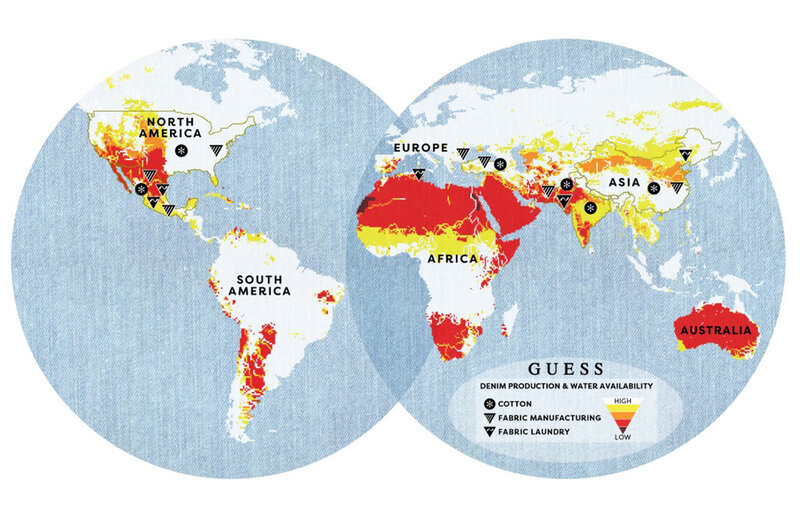Your jeans have a massive water footprint, and that often comes from water-scarce areas. According to a new study, growing cotton and producing denim is putting a lot of water stress on these areas.

Jeans have long been under the radar due to their large consumption of water. The UN estimates that it takes 3,781 liters of water to make a pair of jeans, from the production of the cotton to the delivery of the final product to the store. That means the emissions of 33.4 kilograms of carbon equivalent — making jeans have one of the larger footprints in the fashion industry. But when we consider the fashion industry as a whole, things get even uglier.
Every year, fashion uses 93 billion cubic meters of water — enough to meet the consumption needs of five million people. Around 20% of wastewater worldwide comes from fabric dyeing and treatment, according to the UN. This is where jeans come in.
The global blue jeans brand Guess Inc commissioned Robert Vos, a researcher at USC Donsife in California, to carry out a study looking at water use in its supply chain. Vos mapped out the water use and identified the hot spots in the production line, finding that most of the water use from producing the raw materials for the denim.
The study showed that the facilities involved in denim manufacturing are largely located in hot-spots, areas with large consumption of water despite not that much are actually available. This includes areas of Pakistan, Mexico, China and India and also parts of California.
“By including geographic context in the life cycle analysis of Guess jeans, we created a research outcome with specific, actionable data for our business, and for measurable environmental impact. My hope is that as life cycle analysis studies become more widespread, said Jaclyn Allen, head of sustainability at Guess.
The study also identified some low-hanging fruits — “priority facilities” in which improving water use would be relatively straightforward and simple. Nevertheless, changing the denim production cycle as a whole won’t be easy. The global supply chains are so complex that it’s difficult for a company to carry out big and immediate changes. Change is possible, but it starts with company accountability.
“By the time you get a piece of apparel there might have been dozens of companies in several countries involved in its production,” Vos said in a press release. “If the supply chain is that complex, it is very hard for a company to regulate the way the land and water are being used deep in its supply chain.”
Nevertheless, the company has already implemented a set of actions thanks to the research carried out by Vos. This includes a larger use of recycled and organic cotton and the development of zero-cotton denim styles, which use renewable, wood-based and sustainably sourced materials.

The researcher said there should be better government control regarding labeling and standards, but in its absence, there is a group of NGOs that inform consumers over the ecological footprint of clothing brands, such as the Better Cotton Initiative and the Forest Stewardship Council.
Consumers have to take a different approach, individually and culturally, to shopping and fashion, said Vos. Nevertheless, the large presence of cheap clothing is masking the real costs of many items, not only on ecological terms but also on labor ones, with many reports of the close-to-slavery working conditions in the fashion sector.
“In no way are people paying the real costs of these goods,” Vos said. “We’re not paying the cost of the water damage involved in making our jeans in Pakistan or India. If a brand uses synthetic material and it’s contributing to climate change, that cost is not built in.”
The study was published in the journal Case Studies in the Environment.


